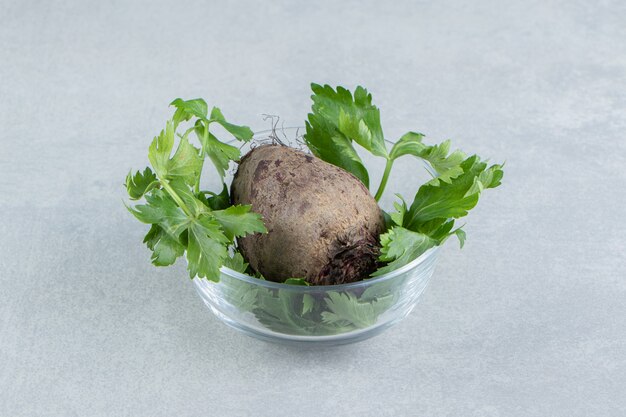Mastering the Art of Cilantro: How to Keep It Fresh in Your Refrigerator 🌿
Cilantro is a culinary gem loved by many for its unique aroma and flavor, turning simple dishes into mouthwatering meals. However, if you’ve ever thrown a wilted bunch away, you’ll know how tricky it can be to preserve cilantro. Let’s delve into the art and science of keeping cilantro fresh in your refrigerator, ensuring you get the most out of this vibrant herb.
Why Cilantro Is So Tricky to Keep Fresh
Before we dive into preservation methods, let’s understand what makes cilantro such a delicate herb. Cilantro has high water content and fragile leaves, which means it can quickly go from fresh to limp in just a few days. The stems, while sturdier, can also become slimy if not stored properly. This rapid degradation is compounded by exposure to ethylene gas, light, and improper refrigeration.
The Green Gold: Benefits of Using Fresh Cilantro
Cilantro is more than just a garnish. It's celebrated for its robust flavor, which can transform dishes and add a touch of freshness. Alongside its culinary perks, cilantro contains vitamins such as A, K, and C, as well as antioxidants. Keeping cilantro fresh maximizes these nutritional benefits, enhancing not only the taste but also the wellness boost in your meals.
The Optimal Way to Store Cilantro in the Fridge
Storing cilantro in the fridge correctly can double or even triple its shelf life. Here’s a step-by-step guide to ensure your cilantro stays crisp and fresh:
Step 1: Clean the Cilantro
Rinse the cilantro gently under cool running water. This removes any dirt or pesticides that may be clinging to the leaves. Shake off the excess water gently, or pat dry with a clean kitchen towel.
Step 2: Trim and Sort
Trim the ends of the cilantro stems just like you would cut the stems of flowers before placing them in a vase. This fresh cut allows them to absorb moisture effectively. Remove any discolored or damaged leaves at this stage.
Step 3: Choose Your Storage Method
The Jar Method:
- Equipment Needed: A glass jar or a tall cup, plastic bag, or cling wrap.
- Steps: Fill the jar with about 1 inch of water. Place the cilantro stems in the jar, ensuring only the stems are in the water. Cover loosely with a plastic bag or cling wrap to create a mini greenhouse effect.
- Benefits: This method prevents excessive moisture, which can lead to wilting and decay.
The Wrap Method:
- Equipment Needed: Paper towels and a zip-lock bag.
- Steps: Lay cilantro flat on a few sheets of paper towel, then roll it up. Slightly moisten the paper towels if needed, but avoid making them too wet. Place the roll into a zip-lock bag and seal it, removing any excess air.
- Benefits: This method minimizes moisture retention, slowing down spoilage.
Step 4: Refrigerate
Place your cilantro in the fridge’s crisper drawer, where humidity is ideal for herbs. The controlled environment of the crisper helps maintain cilantro’s freshness by limiting ethylene exposure and temperature fluctuations.
Alternative Preservation Techniques for Cilantro
If you’re looking for more long-term solutions or have an abundance of cilantro that won’t be used quickly, consider these alternative preservation methods:
Freezing Cilantro
Process: Wash and dry the cilantro. Next, chop the leaves and stems. Spread the chopped cilantro evenly on a baking sheet and freeze. Once frozen, transfer to an airtight freezer bag.
Storage Tip: For convenience, portion the chopped cilantro in ice cube trays by covering them with water or olive oil before freezing. This method makes it easy to add a touch of cilantro to soups and stews directly from the freezer.
Dehydrating Cilantro
Using either a dehydrator or an oven at low temperature can preserve cilantro for months.
Steps for Dehydration:
- Preheat your oven to its lowest setting.
- Wash and pat dry cilantro.
- Spread leaves and stems on a baking sheet.
- Place in the oven, checking periodically until dry.
Storage: Once completely dry, store the cilantro in a glass jar with a tight seal in a cool, dark place.
Making Cilantro Paste
Blend cilantro with olive oil, lemon juice, and salt to form a paste. Store this condiment in the refrigerator for easy use in sauces, marinades, and dressings.
Common Challenges and Solutions While Storing Cilantro
Slime or Bad Odor
If your cilantro develops slime or a bad odor, it might be due to too much moisture. Always ensure the leaves are not submerged in water and have adequate air circulation to prevent mildew formation.
Rapid Wilting
Rapid wilting can result from ethylene-producing fruits like bananas and apples stored nearby. Keep cilantro away from such fruits to maintain its freshness.
Yellowing Leaves
Light exposure often causes cilantro leaves to yellow. Ensure your cilantro is stored in a darker part of the fridge to minimize this effect.
Handy Summary: Quick Tips for Storing Cilantro 🌟
- Hydrate Correctly: Trim stems and place in water in a jar, then cover loosely.
- Control Moisture: Wrap in slightly damp paper towels inside a zip-lock bag.
- Freeze for Future Use: Ice cube trays with olive oil preserve flavor.
- Avoid Ethylene: Keep away from ethylene-producing fruits.
- Minimize Light: Store in the fridge’s crisper drawer.
Experiment with Methods and Find What Works Best
Ultimately, the best method for preserving cilantro depends on personal preference and culinary needs. Whether you favor the jar method’s convenience or the wrap method’s neatness, consistency is key. Regularly checking your cilantro and making sure it’s stored properly will ensure it stays fresh for your next culinary masterpiece.
Understanding how to preserve cilantro not only extends its life but also enriches your culinary experiences. Explore these methods and discover which best suits your kitchen routine to always have fresh, flavorful cilantro at your fingertips. 🌿
